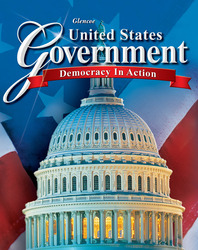United States Government: Democracy in ActionChapter 24:
Local GovernmentsChapter Overviews[logo] Essential Question
What are the main functions of local governments, and what are their greatest challenges today? Section 1 Structure of Local Government
The United States has approximately 86,000 units of local government. They are established by and entirely dependent on the state governments under which they exist. The country has four basic types of local government: the county, the township, the municipality, and the special district. These four types are not found in every state, and they vary from state to state. The county is normally the largest territorial and political subdivision of a state. Special districts deal with a specific function, such as education, the water supply, or transportation. A municipality is an urban unit of government—a town, borough, city, or district that has legal rights granted by the state through its charter. Municipal governments are set up in various ways: mayor-council form, commission form, or council-manager form. Section 2 Serving Localities
Local governments provide many critical services. Education is one of the most important functions of local government. Zoning boards regulate the way land and buildings are used, thus shaping how a community develops. Police protection is the second-largest expense of many U.S. cities, after public utilities. Local governments also fund fire departments and make decisions regarding water service, sewage and sanitation disposal, and mass transit facilities. Social services provided at the local level include unemployment payments and job training, hospital care, and public welfare. The maintenance of parks, zoos, museums, stadiums, and convention centers is also a function of local government. Property taxes are the most important source of revenue to pay for local government services. Local governments also impose income taxes, sales taxes, and fines and fees. States permit local governments to borrow money in the form of bonds. Most local governments receive economic aid from state and federal intergovernmental grants. Metropolitan Statistical Areas (MSAs) are large cities and their surrounding suburbs. They are typically composed of commercial areas, industrial areas, and residential areas. The country's fastest growing region is the Sunbelt, and more Americans live in suburbs than in cities or rural areas. Section 3 Challenges of Urban Growth
Local governments, especially in urban areas, face many problems—a lack of affordable housing and mass transit, pollution, unemployment, and crime. As people moved to the suburbs, the inner cities faced blight. Since the 1990s, urban renewal has focused on rebuilding existing neighborhoods to maintain community ties. It is still difficult, however, to entice new employers and entrepreneurs to older parts of cities. Many major cities have attempted to revitalize their downtowns by creating tax incentives for industries. Local governments are working to end housing discrimination and housing shortages. Large cities face higher rates of homelessness, poverty, and crime. In addition to addressing social problems, city leaders must maintain roads, bridges, airports, water-treatment plants, and many other public facilities. Chronic traffic jams and air pollution pose serious challenges to cities. Some people favor reorganizing small areas into a metropolitan government to better handle regional problems.  | 
















